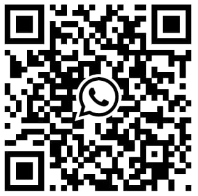Teaching Support System: Traditional, Modern and ICT based
Teachers are great facilitators of knowledge and skills in the 21st century teaching and learning profession. Teachers use teaching support systems, also called teaching aids to enhance classroom instruction, extract learners’ attention and create a motivation to learn. These teaching aids are devices (computer, DVD), instructional aids (book, chalk board, picture), or objects (specimen, map, globe) that help the teacher to effortlessly carry out the teaching-learning process. A lot depends on the creative abilities of the teacher.

The use of teaching aids can facilitate the learning process by making it interesting and less time consuming. The use of teaching aids enables learners to use their hearing or seeing abilities and actively perform something while learning.
Modern teaching support systems heavily rely on Information and Communication Technologies (ICT). They incorporate animations, videos, and slide images to create interesting content.
Teaching Aids can be classified on the basis of:
- Time Period as conventional and non-conventional teaching aids
- Sense organs involvement as auditory, visual, audio-visual and activity teaching aids
- Interactivity or engagement as projective and non-projective teaching aids.
Let us discuss these teaching aids one by one.
Classification of Teaching Support System (Teaching Aids)

1. Teaching Aids on the basis of time-period
On the basis of time-period, teaching aids can be classified as:
(i) Conventional/ traditional teaching aids: In an era devoid of the technological advancements seen today, marked by the absence of electricity, phones, computers, or the internet, teachers relied on conventional tools such as chalk, blackboards, and ‘dust and mud sketching.’ Teaching involved utilizing elements of nature, real objects, and specimens, with books serving as the primary traditional resource for both educators and learners.
(ii) Non-conventional/ Modern teaching aids: With the progressive integration of technology, non-conventional teaching aids have become accessible to teachers and students, including computers, television, radio, interactive whiteboards, and multimedia resources. These contemporary teaching aids manifest in diverse forms, offering a plethora of opportunities such as educational games, activities, and media. The use of modern teaching aids not only adds enjoyment to the teaching process but also presents new challenges, shaping the dynamic landscape of education.
2. Teaching Aids on the basis of sense organs involved
On the basis of sense organs involved, teaching aids can be classified as:
(i) Auditory Aids include gramophone, tape recorder, radio.
(ii) Visual Aids include, chalkboard, flannel board, bulletin board, projected aids (slides, epidiascope, film-strips, motion pictures), representations (charts, sketches, flash cards, posters, cartoons, pictures).
(iii) Audio-Visual Aids include television, sound motion pictures.
(iv) Activity Aids include tours, excursions, field trips, collection of specimens, models, pictures, coins, preparation of models, charts, puppets, dramatics, demonstrations.
3. Teaching Aids on the basis of interactivity or engagement
On the basis of interactivity or engagement, teaching aids can be classified as:
(i) Projected aids include PPT, slides, film-strips, overhead projectors, TV/VCR as they can be projected on screen to give an enlarged image of the material. They can be used suitably for large and small groups. The large, bright and colourful images make them more effective than a non-projected aid.
(ii) Non-projected aids do not require projection screens. Such materials are simply shown, hung or touched, e.g. chalkboard, whiteboard, charts, posters, pictorial materials and models. They provide first hand experiences, make the learners actively participate, stimulate students’ interest, ensure better results and longer retention.
UGC NET Previous Year Questions (Teaching Support System/ Teaching Aids)
1.) Which teaching aids enhance the skills like reading, listening and pronunciation? (UGC NET 21st June 2019 Morning Paper)
(A) Audio-lingual teaching aids.
(B) Scientific teaching aids.
(C) General knowledge teaching aids.
(D) Theoretical based teaching aids.
ANS. A
2.) Identify the only Visual Teaching Learning Resources from the following and choose the correct option.
(i) Gramophone
(ii) Flannel Board
(iii) Bulletin Board
(iv) Radio
(v) Tape Recorder
(vi) Chalk Board
(vii) Film Projector
(viii) Maps
Options
(A) (i), (ii), (iii). (vi) and (viii)
(B) (ii), (iii), (vi) and (viii)
(C) (ii), (iii), (iv), (v) and (vii)
(D) (ii), (iii), (vii) and (viii)
ANS. B
3.) Which of the following statements about teaching aids are correct?
(a) They help in retaining concepts for longer duration.
(b) They help students learn better.
(c) They make teaching learning process interesting.
(d) They enhance rote learning.
Select the correct answer from the codes given below:
(A) (a), (b), (c) and (d)
(B) (a), (b) and (c)
(C) (b), (c) and (d)
(D) (a), (b) and (d)
ANS. B
4.) The use of teaching aids is justified on the grounds of:
(A) attracting students’ attention in the class room.
(B) minimising indiscipline problems in the classroom.
(C) optimising learning outcomes of students.
(D) effective engagement of students in learning tasks.
ANS. C
5.) Which of the following sequences correctly reflects the development of teaching support systems in Indian higher education? (UGC NET 13th Nov 2020 Morning paper)
(A) Audio-visual, Aural-oral, Visual and ICT based.
(B) Aural-oral, Visual, Audio-visual and ICT based
(C) ICT based. Audio-visual. Aural-oral and Visual
(D) Visual, Aural-oral, ICT based and Audio-visual
ANS. B



